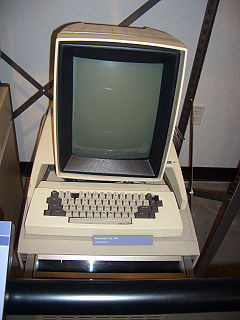Bob Taylor at UT
Bob Taylor, one of the original innovators of the Internet, spoke at The University of Texas LBJ Auditorium on Sept. 17, 2009. He was honored by the UT Graduate College with the Graduate Student Outstanding Alumnus award, as Taylor received a master’s degree in psychology from UT. In 1968, Taylor, along with JCR Licklider, wrote the paper “The Computer as a Communication Device,” definitely a concept that was well ahead of its time, with few people owning computers – large and expensive in that era. This was considered quite a radical view. But, that vision drove the development of the ARPANet and later what has come to be known as the public Internet.
 Introductions were made by Gary Chapman (LBJ professor) and authors Mitch Waldrop and Michael Hiltzik, before Taylor was interviewed by NY Times writer John Markoff. During his talk, Taylor discussed not only his time at the Department of Defense working on the ARPANet, but also his time at Xerox, where the Alto personal computer was first developed. He said that Xerox, as a copier company, was not focused on the potential of computers, stating that one exec told him the computer would never be more important than the copier. It was this limited insight that prevented Xerox from becoming a computing powerhouse. A young Steve Jobs came to a demo at Xerox and witnessed several features of the computer that eventually made their way into early Apple models, mainly the graphic interface and mouse. Taylor said he was traveling during that visit, or he would not have let Steve Jobs enter the building.
Introductions were made by Gary Chapman (LBJ professor) and authors Mitch Waldrop and Michael Hiltzik, before Taylor was interviewed by NY Times writer John Markoff. During his talk, Taylor discussed not only his time at the Department of Defense working on the ARPANet, but also his time at Xerox, where the Alto personal computer was first developed. He said that Xerox, as a copier company, was not focused on the potential of computers, stating that one exec told him the computer would never be more important than the copier. It was this limited insight that prevented Xerox from becoming a computing powerhouse. A young Steve Jobs came to a demo at Xerox and witnessed several features of the computer that eventually made their way into early Apple models, mainly the graphic interface and mouse. Taylor said he was traveling during that visit, or he would not have let Steve Jobs enter the building.
Another interesting story Taylor told had to do with a demo of the Alto at Xerox in which execs and their wives were in attendance (execs were men in those days). The execs had no interest in the technology, wouldn’t even sit in front of it. But the women loved it. Basically, the men didn’t type, so they didn’t perceive the value. This is definitely related to the gender/diversity implications associated with the early stages of technology development.
Taylor also discussed how other large companies were not interested in the Internet, with IBM focused on batch processing and AT&T on voice.
Taylor also talked about free Internet and the challenge of irresponsibility and malicious behavior, as well as the myth that Al Gore said he “invented the Internet.” Taylor confirmed that Gore never said that, and he was misquoted in a NY Times article. Taylor also had some interesting ideas on using architecture and spatial layouts to improve collaboration in the workplace.
This was a fascinating and inspiring talk that highlighted the traits of a true innovator. View the event recap, along with Twitter feed and eventually full video archive of the talk. The Statesman also covered the event.
As a side note, a few days after the talk, I read this article on Harvard’s Nieman Reports “A Reporter’s Toolbag, Reduced to Two – a Flip Camera and an iPhone.” I was struck by it, because that is exactly the configuration I used at this event. I shot the video with the Flip and Twittering on my iPhone. Had I been a little closer, I could have used the Qik app (beta) on my iPhone to live stream and archive segments of it. And, as the article states, with the iPhone 3G S, with video on board, the number of tools becomes more like one.